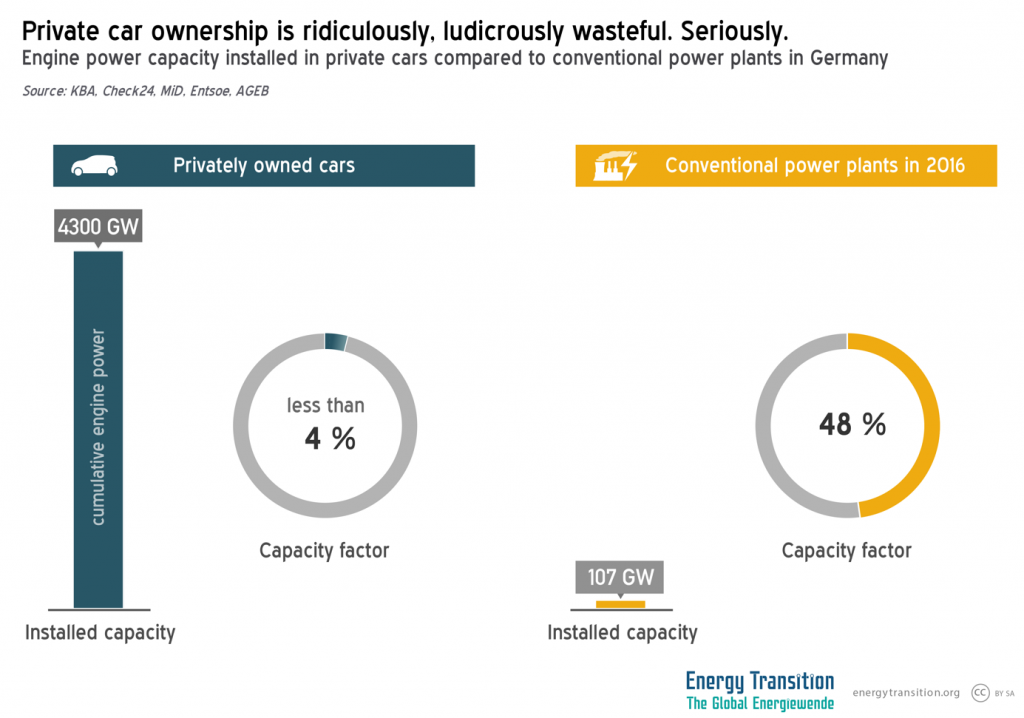A capacity factor is the relationship between a generator’s rated capacity (measured, say, in kilowatts) and the amount of energy produced (measured, say, in kilowatt-hours).
For instance, a wind turbine with a rated capacity of 1.5 megawatts could theoretically produce a maximum of 36 megawatt-hours a day (1.5 MW x 24 hours) under ideal conditions, equivalent to a capacity factor of 100 percent – the turbine then generates its maximum output all the time.
As a thinking exercise, Germany has about 4300GW of “installed capacity” – the amount you could possibly use – of car engine power that could be used at any time. But because cars spend most of their time sitting around, their capacity factor is only around four percent.

This is a pretty good argument for more car-sharing! But back to electricity.
In practice, an onshore wind turbine has a capacity factor closer to 25 percent in good locations, so a 1.5 MW turbine would run at 0.375 megawatts on the average, producing nine megawatt-hours a day. In Germany, the capacity factor of onshore wind turbines is below 20 percent, whereas the capacity factor of offshore wind turbines is estimated to be in the mid-30s.
The capacity factor of solar likewise largely depends upon the amount of sunlight and is generally estimated to be between 10 percent and 20 percent. See also “full-load hours.”